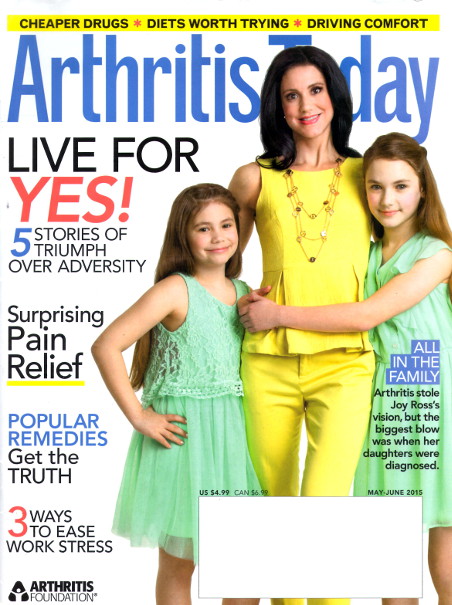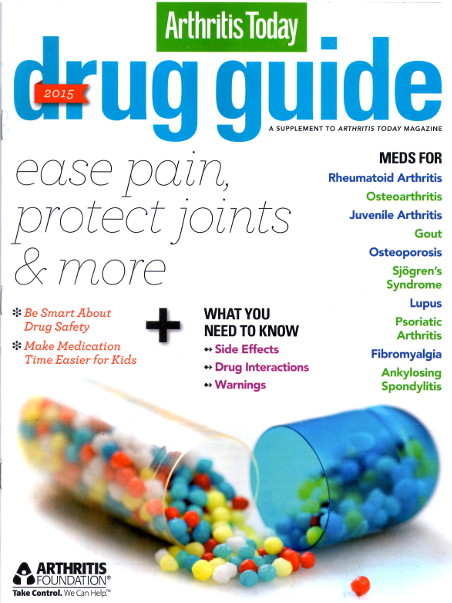I suppose that the subject matter for this particular column started with the arrival of a magazine in my mail box a few days ago. The magazine in question is entitled ‘Arthritis Today’ and its presence alongside the more normal mail was a real puzzle. My first reaction was that this was the typical mix up where my neighbor’s mail makes it into my box and vice versa. A glance at the mailing label dashed that notion; the name and address clearly indicated that it was intended for a member of my family.
At bit more of reflection soon led to the answer. One of my clan had been having problems with his hand and had gone to see a doctor. The diagnosis was mild osteoarthritis and a generic treatment program – indicative of the whole ‘we don’t quite know how to treat this so we’ll say something you could have figured out for yourself’ attitude that sometimes is seen in the medical profession – was prescribed.
I’m sure our insurance company was promptly billed and less than two scant weeks later, this magazine arrives unbidden. So the questions of who sent it, when was that particular decision made, how did the publisher know where to send it, and why was it thought relevant seemed plausibly answered. There was only one lingering line of questions.
Who pays for this magazine? Is it a marketing technique, where one issue is sent in hopes that a permanent subscription will result? While possible, this idea seems highly doubtful. There were no indications that the publisher was tempting our dollars from our wallet. No gaudy disclaimers like “fabulous first free issue” or “trial offer” adorned the front of the mailer. This issue of Arthritis Today was sent in the standard clear, thin, plastic bag used for existing subscriptions, which is designed to let you see the content while keeping the pages relatively safe from the elements.
The most plausible explanation is that somewhere between money leaving my paycheck to pay for the family’s health coverage and revenue flowing into the publisher’s offices to pay for staff salaries, print costs, marketing, distribution, and the like, there is a complicated shell game that goes on that makes acceptable the risk of sending out the magazine unsolicited to a perhaps disinterested household.
Several possible explanations exist for how that risk can be perceived as low even if the reality is quite different. Perhaps the doctor’s office pays for the subscription as part of the service they provide. Perhaps the drug companies with a vested interest in pushing the next big arthritis drug underwrite the cost. This later explanation seems to be the most likely as there was a 20-page pamphlet entitled ‘Arthritis Today: Drug Guide, 2015’ that piggybacked along with the main publication.
Most likely this last inference is the correct one. But even if the drug companies are directly underwriting the cost of this publication, all that has done is to move the risk associated from one entity (the publisher) to another (the pharmaceutical companies), it doesn’t eliminate it.
We could keep on this way, peeling layer after layer from the onion, but in the end, after all the dust settles and the smoke clears, we still have the undeniable facts that someone is bearing the cost to produce this magazine and the risk that he may not make a return on the investment.
Of course, taking risk and passing on costs is par for the course for businesses. Almost every business must shoulder risk in order to grow and must bear a cost associated with that risk. The cost usually has two components; the first is associated with mitigating the risk and the second is associated with how large will the payout be if the risk realizes. Ultimately some or all of these costs gets passed on to its customers. The amount of risk taking is held in check by the fact that the customer based may finally have enough and move on to a competitor. People are willing to bear a cost when it is a mild irritant or when it looks like it will be limited in time. But push the customer base too far with large or open-ended price hikes and there is an excellent chance that they will leave to find greener pastures, leaving the firm to bear the costs themselves. Competition acts as the natural balance to risk taking.
What is different in the ‘Arthritis Today’ situation, is that there is no danger that the risk and associated costs will be born directly by the company – no matter which one in the chain from publisher, to doctor, to pharmaceutical company. Each of them are in a position to take more risk and pass on more cost than a normal business because of the government mandates and regulations regarding health care. All of the businesses in this chain know that the customer base is a captive audience; that there is no real way for them to move onto a competitor.
This situation is then a textbook example of what is known as a moral hazard. When a moral hazard is present, a firm can and will take a greater risk when they know that some other party will be stuck with the cost. In this case, the particular cost is born by my health care coverage provider who will then pass the pain directly onto me in the form of higher premiums, larger deductibles, or both.
Overall, the cost of receiving this magazine is small but it is worrisome for two reasons. The first is the basic principle that I shouldn’t have to bear a cost as a captive customer base. The second is that this case is a symptom of an endemic problem throughout the economy. Many of the government-backed, ‘too big to fail’ or ‘special interest’ programs show the same type of moral hazards on a much grander scale. I’ll be exploring some of the more egregious ones in future columns.


